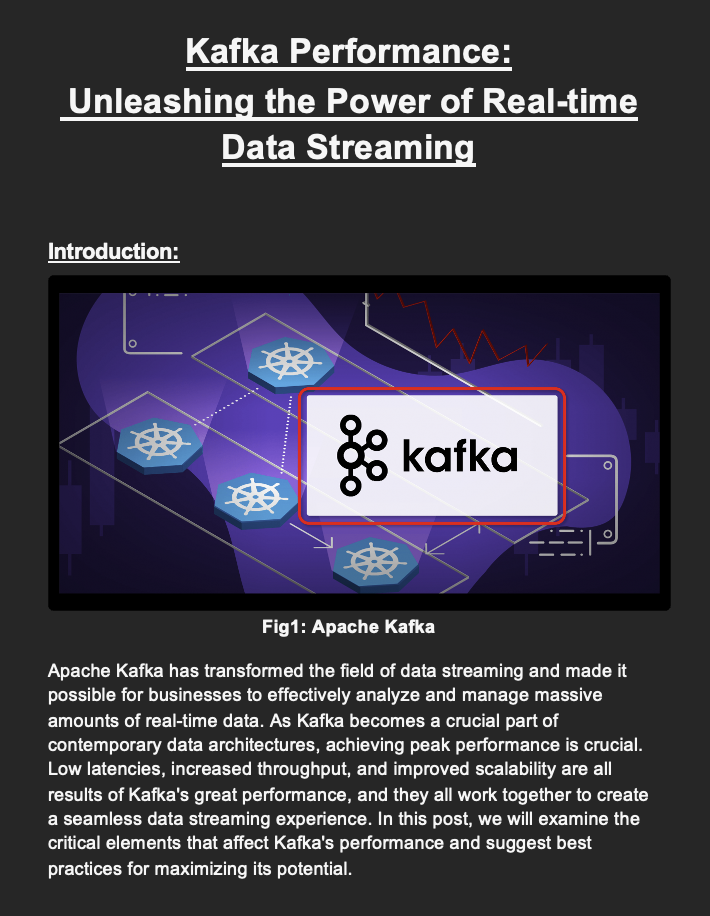Kafka Performance (Grade A)
Summary:
The article discusses the critical factors that influence the performance of Apache Kafka, a data streaming platform essential for managing large volumes of real-time data. Achieving optimal performance in Kafka is vital for low latencies, high throughput, and scalability. Several factors impact Kafka’s performance:
- Hardware Resources: CPU speed, RAM size, disk speed, and network bandwidth are crucial for high throughput and low latencies.
- Partitioning Strategy: A well-designed partitioning mechanism ensures balanced workloads and effective data processing. Overloading specific partitions can create bottlenecks.
- Replication Factor: Higher replication factors improve fault tolerance but can adversely affect write latencies.
- Batch Size and Compression: Choosing the right batch size and enabling compression can improve throughput and reduce network overhead.
- Consumer Group Management: Balanced consumer groups and an appropriate number of consumers can prevent uneven data distribution and processing bottlenecks.
The article also suggests best practices for maximizing Kafka’s performance:
- Monitoring and Benchmarking: Use tools like Kafka’s built-in metrics and JMX for insights into cluster health.
- Hardware Provisioning: Invest in high-performance hardware tailored to your Kafka use case.
- Configuration Optimization: Kafka offers various configurable options that can be fine-tuned to meet workload needs.
- Efficient Producers and Consumers: Optimize configurations for producers and consumers to ensure quick message processing and accurate offset commits.
- Topic Partitioning Strategy: Carefully design the topic partitioning to prevent hotspots and ensure uniform data distribution.
In conclusion, understanding these factors and implementing best practices can help organizations maximize Kafka’s potential, enabling real-time data processing and enhancing data-driven decision-making.
Excerpt:
Kafka Performance
Unleashing the Power of Real-time Data Streaming
Introduction:

Fig1: Apache Kafka
Apache Kafka has transformed the data streaming field and enabled businesses to analyze and manage massive amounts of real-time data effectively. As Kafka becomes a crucial part of contemporary data architectures, achieving peak performance is crucial. Low latencies, increased throughput, and improved scalability are all results of Kafka’s great performance, and they all work together to create a seamless data streaming experience. In this post, we will examine the critical elements that affect Kafka’s performance and suggest best practices for maximizing its potential.


Reviews